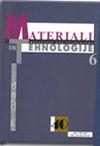石灰和水泥砂浆中橄榄石骨料对大气co2封存的作用
IF 0.8
4区 材料科学
Q4 MATERIALS SCIENCE, MULTIDISCIPLINARY
引用次数: 0
摘要
建筑业因大量释放二氧化碳(CO2)进入大气而受到批评。研究人员已经确定了各种捕获大气中二氧化碳的技术。然而,公认的方法既有优点也有缺点。因此,科学界正在研究捕获大气中二氧化碳的简单且容易展示的方法。其中一项技术是将气态二氧化碳转化为稳定的碳酸钙/碳酸镁。本研究旨在确定水泥和石灰砂浆中橄榄石骨料的碳捕获效率。橄榄石骨料在碱性环境下有改变矿物结构的倾向,并能与大气中的CO2相互作用形成稳定的碳酸盐。采用XRD、TGA等分析技术对石灰和水泥砂浆中水化相的形成进行了分析。研究得出结论,加入橄榄石可以隔绝大气中的二氧化碳,并将其转化为碳酸镁。在石灰和水泥砂浆中,石灰砂浆捕获了更多的二氧化碳,并产生了稳定的化合物。本文章由计算机程序翻译,如有差异,请以英文原文为准。
ROLE OF OLIVINE AGGREGATE IN LIME AND CEMENT MORTARS FOR THE SEQUESTRATION OF ATMOSPHERIC CO2
Construction industry is majorly criticised due to a great liberation of carbon dioxide (CO2) into the atmosphere. Researchers have identified various techniques to capture the atmospheric CO2. Nevertheless, the recognised methods have both merits as well as demerits. Thus, scientific communities are working on simple and easily exhibited ways of capturing atmospheric CO2. One such technique is the conversion of gaseous CO2 into stable calcium/magnesium carbonates. The present study was conducted to identify the carbon-capturing efficiency of olivine aggregate in cement and lime mortars. Olivine aggregate has a tendency to change its mineral structure under alkaline environment and it is able to interact with atmospheric CO2 to form a stable carbonate. Analytical techniques (XRD, TGA) were conducted to elucidate the formation of hydrated phases formed in both lime and cement mortars. The study concluded that the addition of olivine sequestered atmospheric CO2 and converted it into magnesium carbonate. Out of the lime and cement mortar, lime mortar captured a greater amount of CO2 and produced stable compounds.
求助全文
通过发布文献求助,成功后即可免费获取论文全文。
去求助
来源期刊

Materiali in tehnologije
工程技术-材料科学:综合
CiteScore
1.30
自引率
0.00%
发文量
73
审稿时长
4-8 weeks
期刊介绍:
The journal MATERIALI IN TEHNOLOGIJE/MATERIALS AND TECHNOLOGY is a scientific journal, devoted to original papers and review scientific papers concerned with the areas of fundamental and applied science and technology. Topics of particular interest include metallic materials, inorganic materials, polymers, vacuum technique and lately nanomaterials.
 求助内容:
求助内容: 应助结果提醒方式:
应助结果提醒方式:


